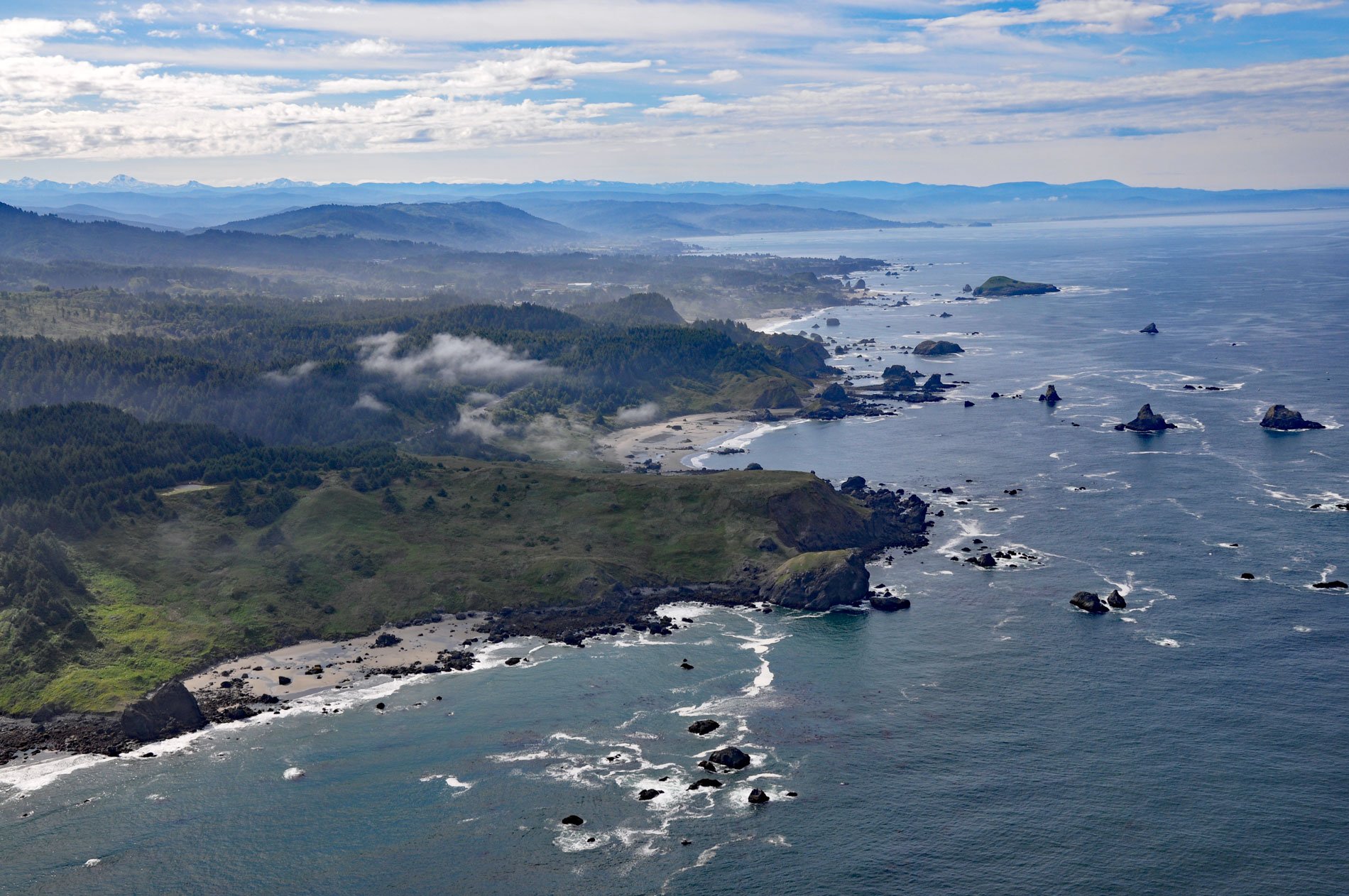Lone Ranch Beach is a sand and gravel deposit at Cape Ferrelo situated between Lone Ranch Creek to the north and Ram Creek to the south in Samuel H. Boardman State Scenic Corridor, about 22 miles (35 km) south of Gold Beach and 5 miles (8 km) northwest of Brookings, Oregon. The beach is named after Lone Ranch Creek that starts at an elevation of roughly 1500 feet (457 m) in the Coast Range and flows generally southwest of 3.5 miles (6 km) to the north end of Lone Ranch Beach on the Pacific Ocean. The name comes from Lone Ranch, the 1860 homestead of John Cresswell. Cape Ferrelo is named after Bartolomé Ferrelo, the Portuguese navigator for the Spanish expedition of Juan Rodriguez Cabrillo, who sailed with two ships from Mexico in June 1542, for the purpose of exploring the coast of California. The ships often separated and during a severe storm Cabrillo turn back. Ferrelo, in command of the second ship, proceeded north until another storm forced him south. It is not known how far north Ferrelo explored since there were significant errors in determining latitude, but it is likely that he saw Point Arena. There is no information connecting him with Cape Ferrelo, though it was named in his honor by George Davidson of the U.S. Coast Survey, probably in 1869.
The Oregon coast from the vicinity of Cape Blanco south into northern California is physiographically distinct from the remainder of the Oregon coast to the north, a result of a distinctive geologic origin. South of Cape Blanco, the dominant rock represents the Otter Point Formation that developed during the Jurassic, a mélange composed of sandstone and siltstone with pillow lavas, breccias, cherts, and blue schist distributed randomly throughout. The resilient nature of this formation has resulted in a rugged, rocky coastline with steep sea cliffs, narrow sand and gravel beaches, and numerous offshore islands and rocks, that today, are part of the Oregon Islands National Wildlife Refuge. Extensive, well-developed marine terraces occur along the coastal region. Formed through wave erosion and beach deposition and subsequently elevated by a combination of eustatic change and tectonic uplift during the Pleistocene, these terraces provide a limited quantity of available level land. The marine terraces create a series of steps to a maximum elevation of 1,500 feet (457 m); however, many of the higher terraces are eroded and barely discernible. The best developed terrace occurs at an elevation of 850 to 925 feet (275 m) and is one mile (1.61 km) wide, extending from Brookings in the south to Lone Ranch in the north.
The elevated marine terrace at Lone Ranch was inhabited by humans from 2,000 to 3,000 years ago, until just prior to European arrival in the area. Historically, the Tutuni people, a collective term for numerous individual bands, lived from Cape Ferrelo north to the southern vicinity of the Coquille River, and the Chetco people inhabited the coast between the Winchuck River in the south to Cape Ferrelo in the north. Villages were typically near a stream, such as Lone Ranch Creek, where a village called ‘Nalh-Tene-Tun‘ was located. In 1856, William Tichener was hired by the government to hunt down refugees of the Rogue River War, but many were killed and about 150 were finally rounded up for removal to the Siletz Reservation. In 1872, the homesteader Cresswell discovered borate of lime at Lone Ranch Creek, and in 1890 a new owner named Fleming took an option on the property with the intent to open the deposit. He allowed the option to lapse, and Walter Gray purchased the land for the Pacific Coast Borax Company. After two years of desultory mining, operations ceased and the area returned to obscurity until 1961 when the new route of US Highway 101 was opened for traffic. Part of the original ranch lying between the highway and the ocean was donated to the state in 1950 by Borax Consolidated Limited, parent company of Pacific Coast Borax Company. A second parcel was donated in 1960 by United States Borax & Chemical Corporation, successor to Pacific Coast Borax Company. Both parcels are now part of Samuel H. Boardman State Scenic Corridor. Read more here and here. Explore more of Lone Ranch Beach and Cape Ferrelo here:

